Traditional Spotted Dick
This post may contain affiliate links. See my disclosure policy.
A quintessential British dessert, Spotted Dick represents everything that is delicious about traditional English cooking. Tender steamed pudding dotted with succulent currants is drizzled with a luxuriously rich and creamy vanilla custard (recipe included). It’s pure heaven!
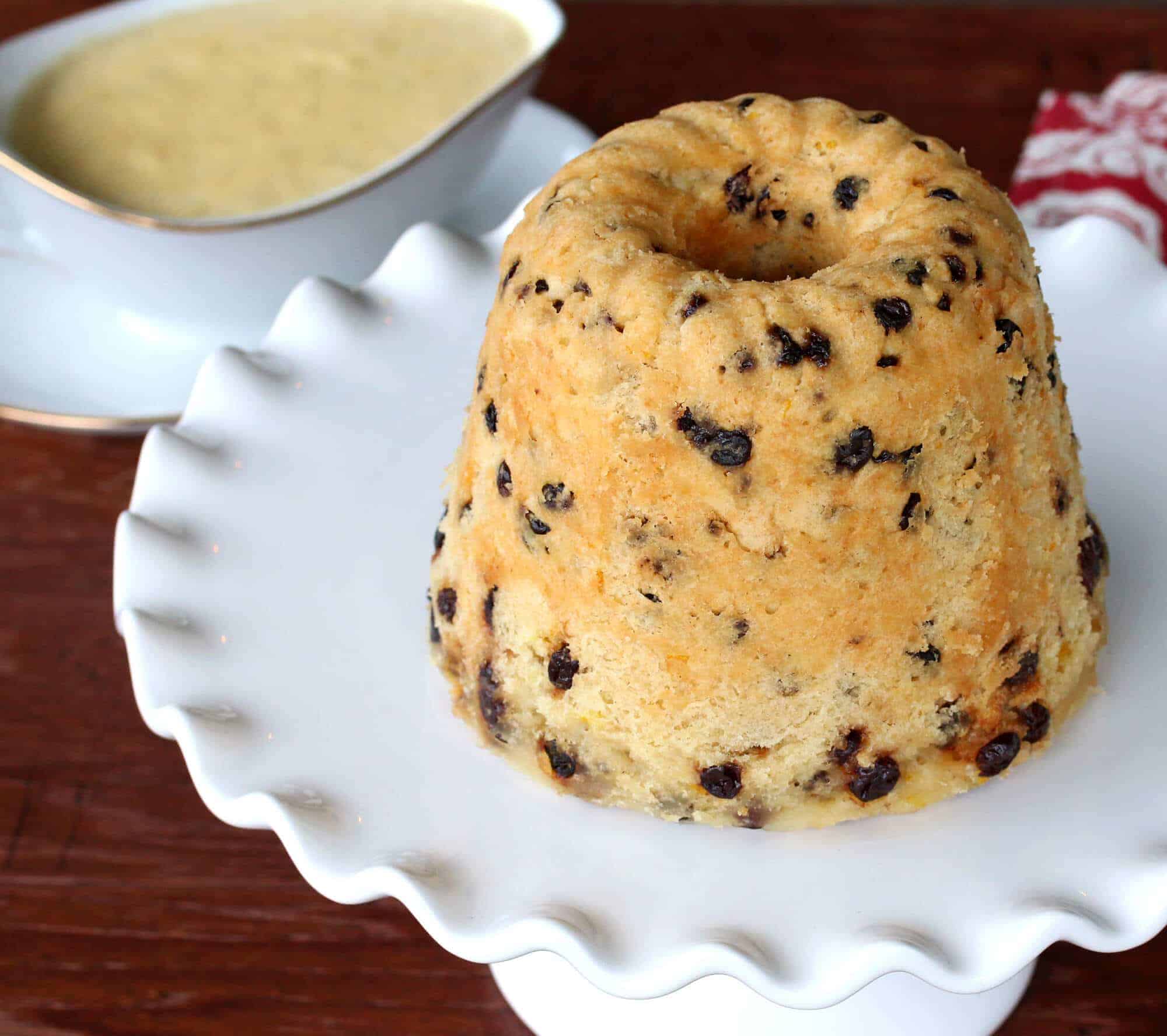
What is Spotted Dick?
“Spotted what?” I hear you. That’s the most common question from the snickering lips of Americans the first time they hear the name of this legendary British steamed pudding, Spotted Dick. I was among that giggling crowd when I first moved to England for a 7-year stint, being quite naive to British terminology beyond what I had picked up from my favorite older British sitcoms (e.g., Fawlty Towers, Black Adder, Monte Python, etc). And what’s interesting is that despite its immense popularity over the course of at least two centuries, time seems to have lost the origins of its quirky name.
What is the Origin of Spotted Dick?
While “spotted” seems simple enough (i.e., the “spots” throughout the pudding from the dried currants), “dick” is the more puzzling of the two terms. Was it referring to the nickname of someone named Richard? Some have wondered if comes from an old English corruption of the word pudding to “puddick.” But who knows? The mystery of Spotted Dick goes on.
The first known recorded recipe of Spotted Dick is found in the mid-19th century cookbook, The Modern Housewife or Ménagère, by Alexis Soyer, one of Britain’s first celebrity chefs who seems to imply that the pudding had already been around for some time.

In any case, Spotted Dick has remained high in popularity over the centuries to the extent that you can find if in tin cans, manufactured by Heinz, in every British grocery store. That was my first exposure to the stuff. I still remember going into a grocery store in England and picking up a can of Spotted Dick on the shelf and thinking “what IS this??” as I showed it to my mom and we both started giggling like school girls.
For my British friends who are wondering what the fuss is all about, you’ll have to Google the name for its anatomical reference to see what Americans find so amusing about it. To tell you myself would make me blush ;)
But to continue, I’ve never been able to get excited about the canned stuff, but homemade? That’s an entirely different story.

Spotted Dick is just one of many great traditional British dishes I was introduced to during the nearly 7 years I lived in England after moving there from Germany. Those were among the best years of my life and I will always consider the UK my second home. My husband also spent two years in England and Wales long before we met. He loves the UK as much as I do and we have both traced our ancestry far back to medieval times; my husband to Cornwall and mine, well, all over the British Isles.
There are many places throughout the UK that we consider favorites. Below are two of my favorite villages in England’s Cotswold region. Castle Combe, in Wiltshire on the southern-most edge of the Cotswolds, has often been named as the ‘prettiest village in England.’ Originally it was a British hill fort which became occupied by the Romans and later the Normans because of its strategic proximity to The Fosse Way. During the Middle Ages it became an important center for the wool industry and in more recent years has been a popular tourist site and setting for numerous films, including the original Dr. Doolittle with Rex Harrison, a Spielberg film, and Downton Abbey. The buildings are several centuries old and listed as ancient monuments. Their stone construction with thick walls and roofs made from spit natural stone tiles are all typical of Cotswold architecture.

Bibury is another village situated in the Cotswolds and many consider it the most picturesque. It’s located in the Gloucestershire region of the Cotswolds and has also been referred to as “the most beautiful village in England” as well as one of the most charming towns in Europe.

Arlington Row (below), with its cottages dating to the 1300’s, is one of the most photographed scenes in the Cotswolds. Bibury is also home to the world’s first horse racing club, The Bibury Club, formed in 1681.
A popular tourist attraction and setting for several films (including Stardust and Bridget Jones’ Diary), it was also a favorite spot of Henry Ford. On one of his trips to the Cotswolds he attempted to buy the entire row of houses in Arlington Row and have them shipped back to Michigan to be reassembled there in Greenfield Village. Thank goodness the English said “NO.”

It’s a charming notion to imagine the residents of Castle Combe and Bibury during the Victorian Age sitting down at the table behind these vintage stone walls enjoying a plate of Spotted Dick drizzled with custard sauce at the end of their meal.
Spotted Dick is very, very easy to make and if you’ve never had a steamed pudding before you will be especially tickled to give this a try. Not overly sweet, the sweetness comes mostly from the currants and the custard sauce, which is an absolute must. If you try serving Spotted Dick without the custard sauce the Dickensian police of Victorian England will parade into a time machine and come clobber you over the head with a wooden billy club.
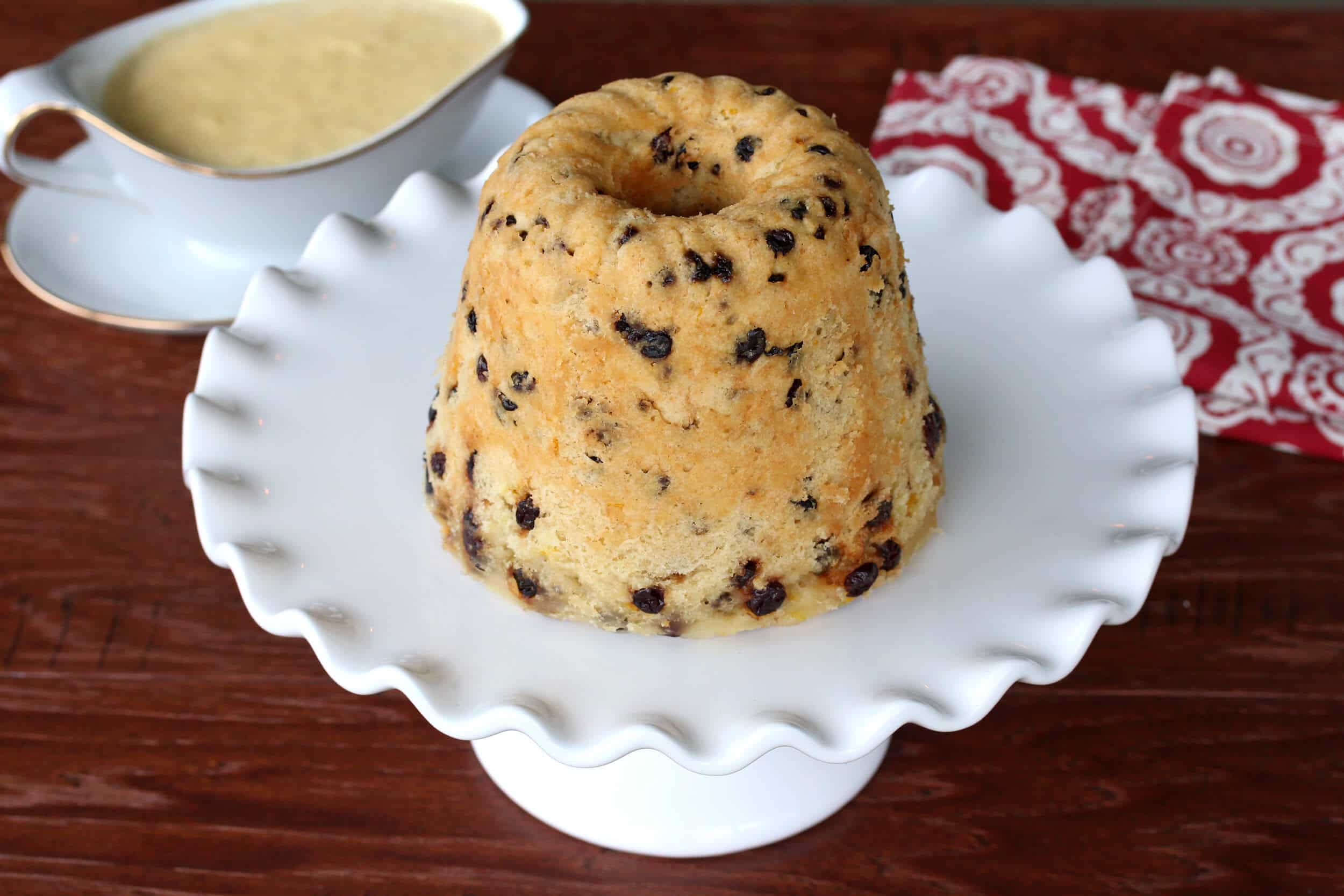
Three Ingredients for Making Proper Spotted Dick
Caster Sugar: Caster sugar is the form of sugar traditionally called for in Spotted Dick and most British baking. While very popular in the UK it’s virtually unheard of here in the U.S.. And while it can be found in some gourmet specialty shops it’s very expensive, which is silly because all it is is finely ground granulated sugar. You can make it yourself simply by grinding regular granulated sugar in a coffee or spice grinder for a few seconds. That said, though caster sugar is the traditional choice it really isn’t necessary because after 90 minutes of steaming the sugar is going to completely dissolve, whether caster or granulated. So the choice is yours.
Dried Currants: Despite their name, dried currants aren’t actually currants at all, they are in fact a small variety of raisin known as zante raisins. They are widely used in British baking and are preferred over raisins in many baked goods, including Spotted Dick, because 1) they’re smaller, remain a bit firmer and don’t get mushy, and 2) instead of being overly sweet they have a slightly more tart flavor. While not necessarily traditional, for added flavor you can include some Candied Orange Peel (or lemon, same method) or some Candied Ginger.
Shredded Suet: Every traditional recipe for Spotted Dick calls for it as do many other British pastries and pies, resulting in a superior texture. It can be difficult if not near impossible to find in many areas outside of Britain and in more modern times many people are replacing suet with butter anyway. Butter works just fine but the beef suet has definite advantages. Suet has a high melting point and so as the pudding cooks small pockets are formed where the suet is slower to melt, resulting in a lighter, more spongy texture. The brand below, Atora Shredded Beef Suet, has been around since 1893, a household name for over a century. It’s very expensive though outside of the UK and you can very easily make your own beef suet: check out my tutorial on How to Make Beef Tallow!
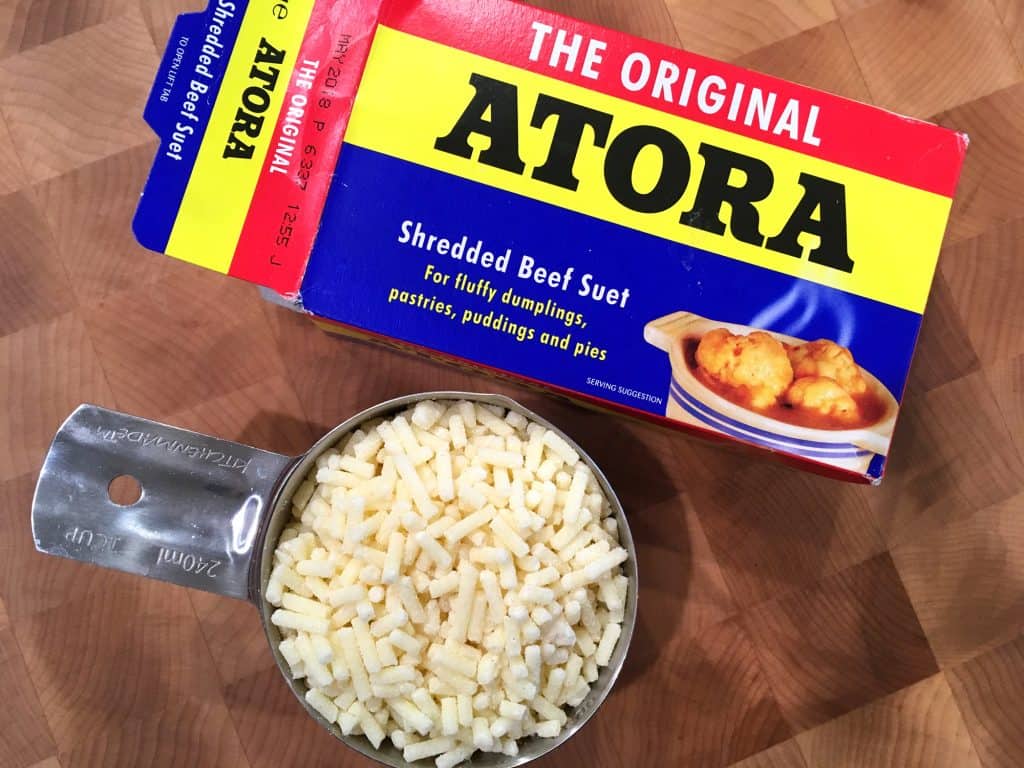
Traditional Spotted Dick Recipe
Let’s get started!
Place the flour, baking soda, salt and beef suet or butter in a food processor and pulse until the mixture resembles coarse sand. Transfer the mixture to a large mixing bowl.
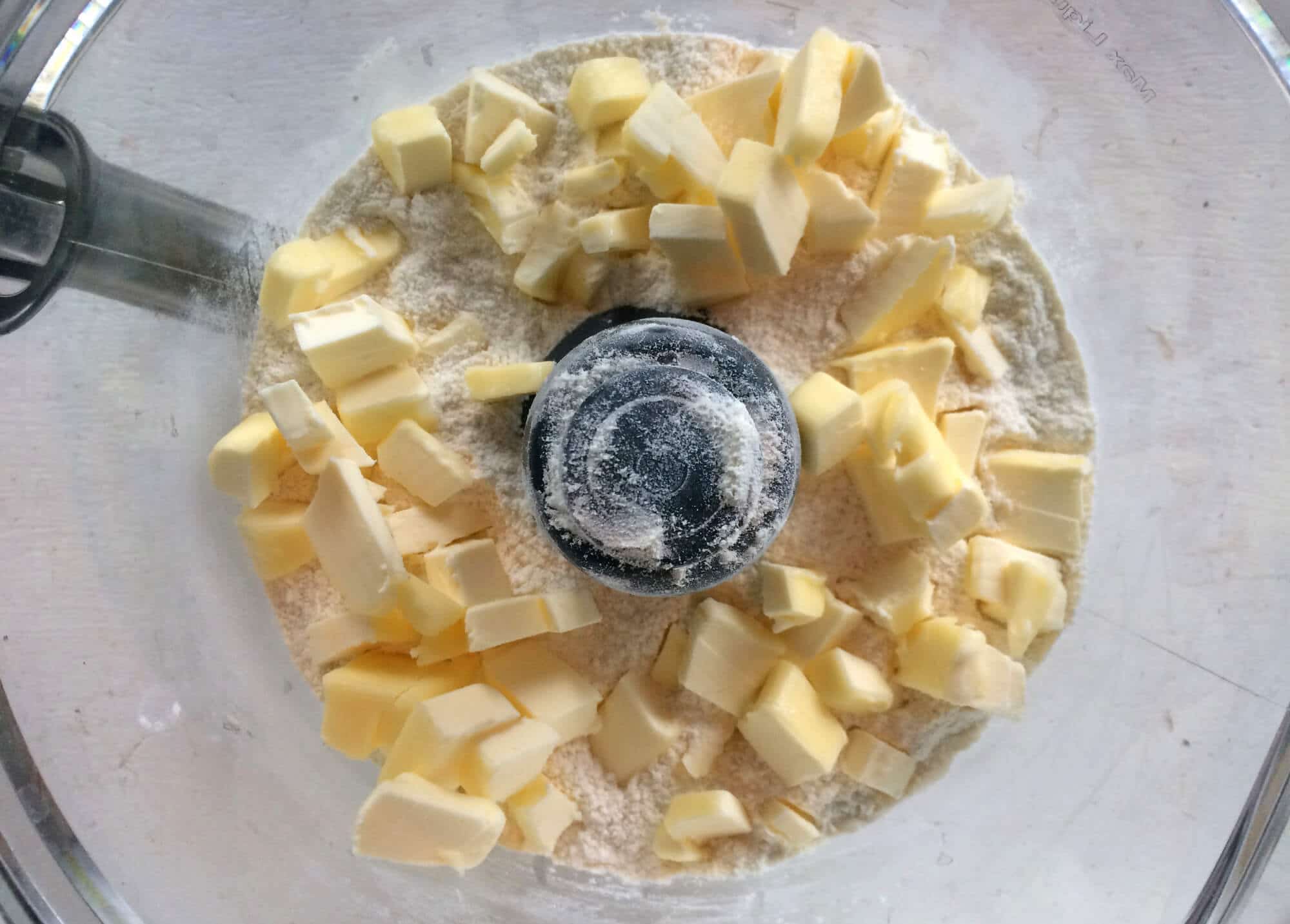
Add the milk, lemon zest, vanilla extract and currants and stir until combined.
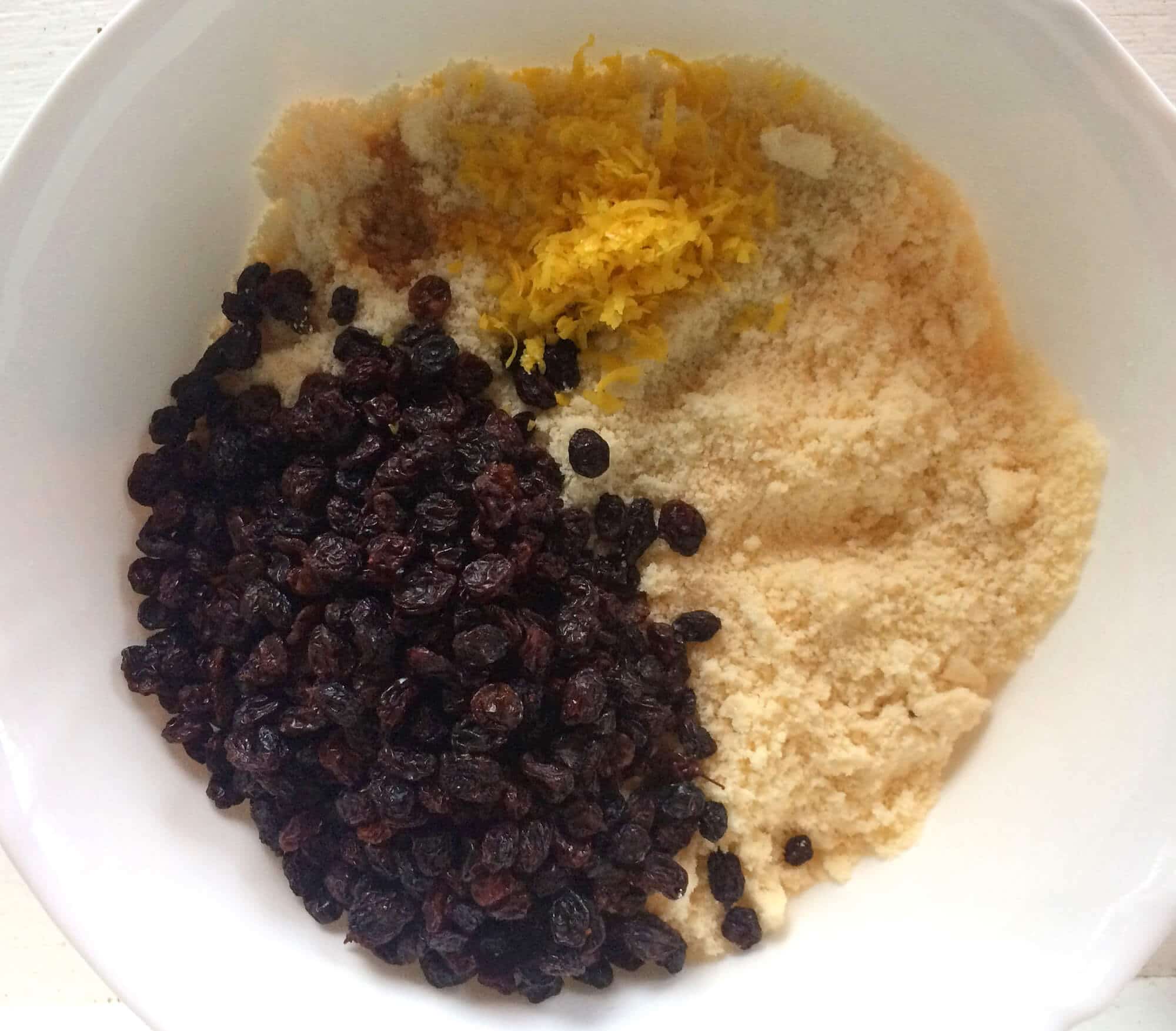
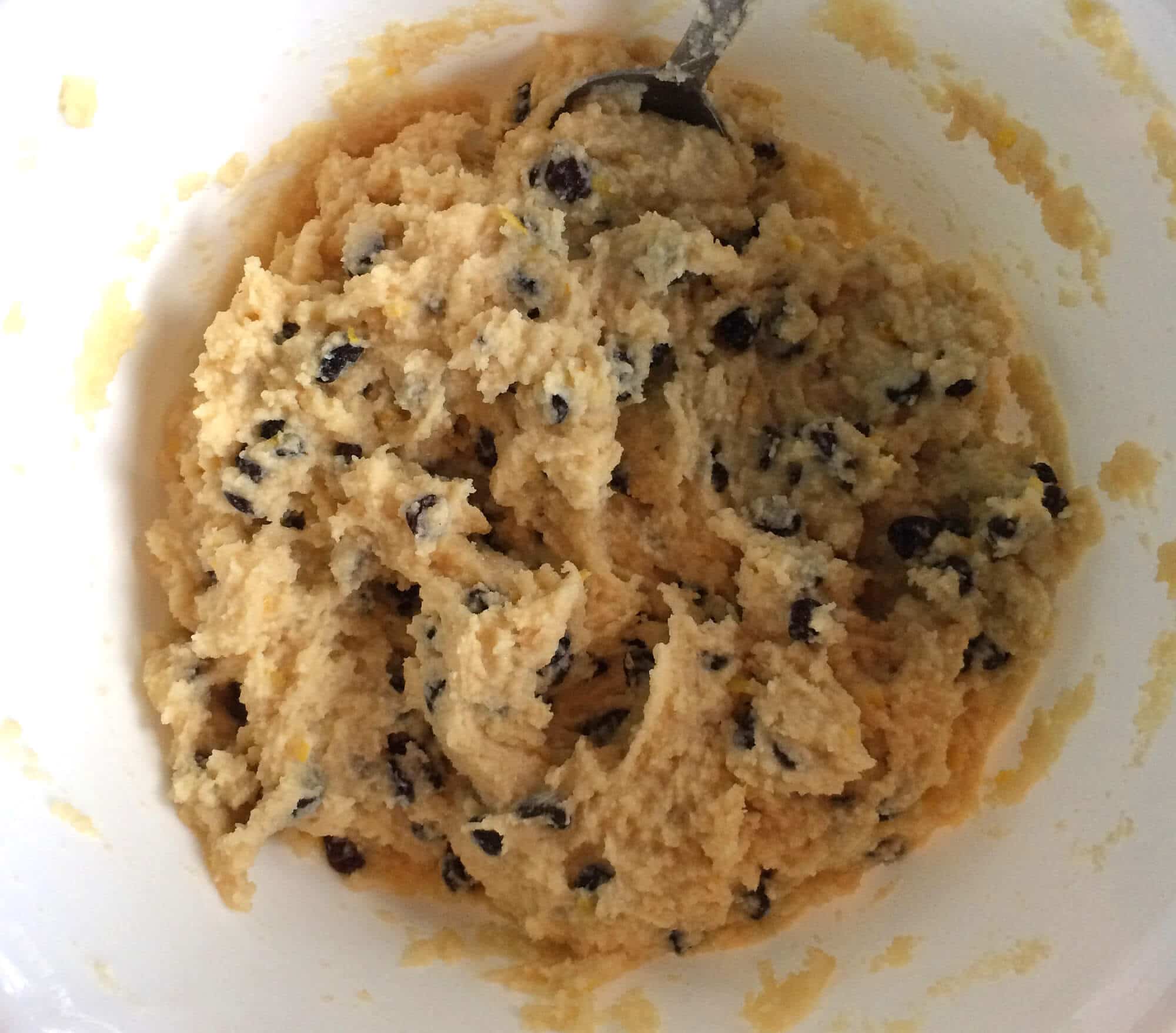
Spoon the batter into a generously greased pudding mold.
I’m using one of 4 pudding molds I own. The one in the picture holds a quart (about one liter) but most of my other ones are larger, and that’s fine, too. The smallest pudding mold (1.5 liters) with the best reviews I’ve found on Amazon is this one. A great place to find pudding molds is in thrift shops. I found two of mine at Goodwill. The other two I brought with me from Europe.
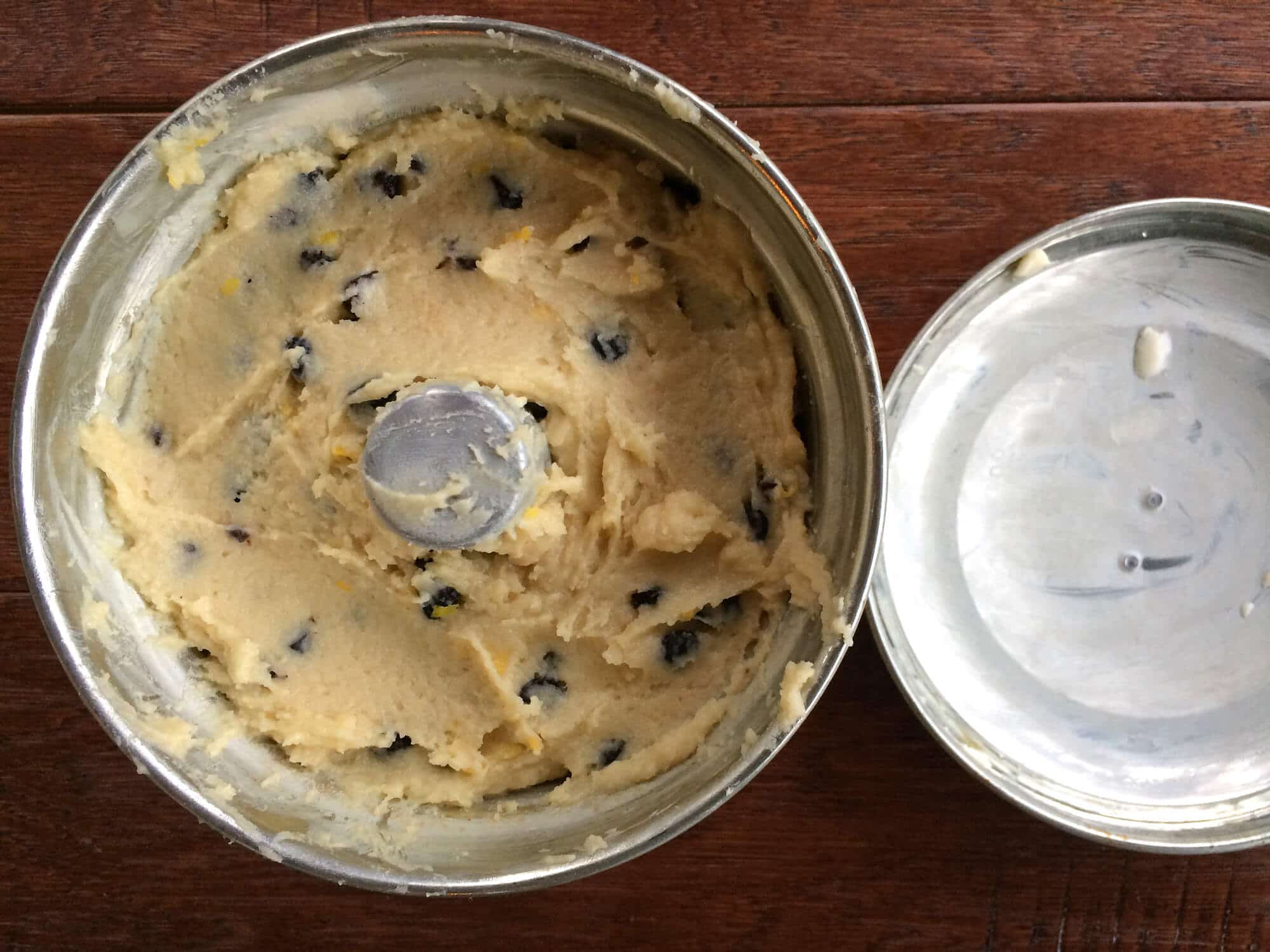
Place metal cookie cutters, a folded dish towel or crumpled tin foil on the bottom of the stock pot. The pudding mold cannot come in contact with the bottom of the pot or it will scorch the pudding.
Lower the pudding mold into the boiling water so that the water comes up to the halfway point of the mold. You’ll likely need to weight the pudding mold down with something heavy to keep it from bobbing up and down in the water. I use a plate and then put something heavy on top of it, like another bowl.
Cover the stock pot, reduce the heat to a simmer and simmer undisturbed for 3-4 hours if using suet, or about 90 minutes if using butter (suet has a very high melting point and needs that amount of time to melt and create the “pockets” throughout the pudding that yields the characteristic light/spongy texture associated with suet-based puddings). Check the water level periodically and add more water as needed to keep it at the halfway point of the pudding tin.

Remove the pudding mold from the water bath and let it rest for 15 minutes. Invert the pudding onto a plate.
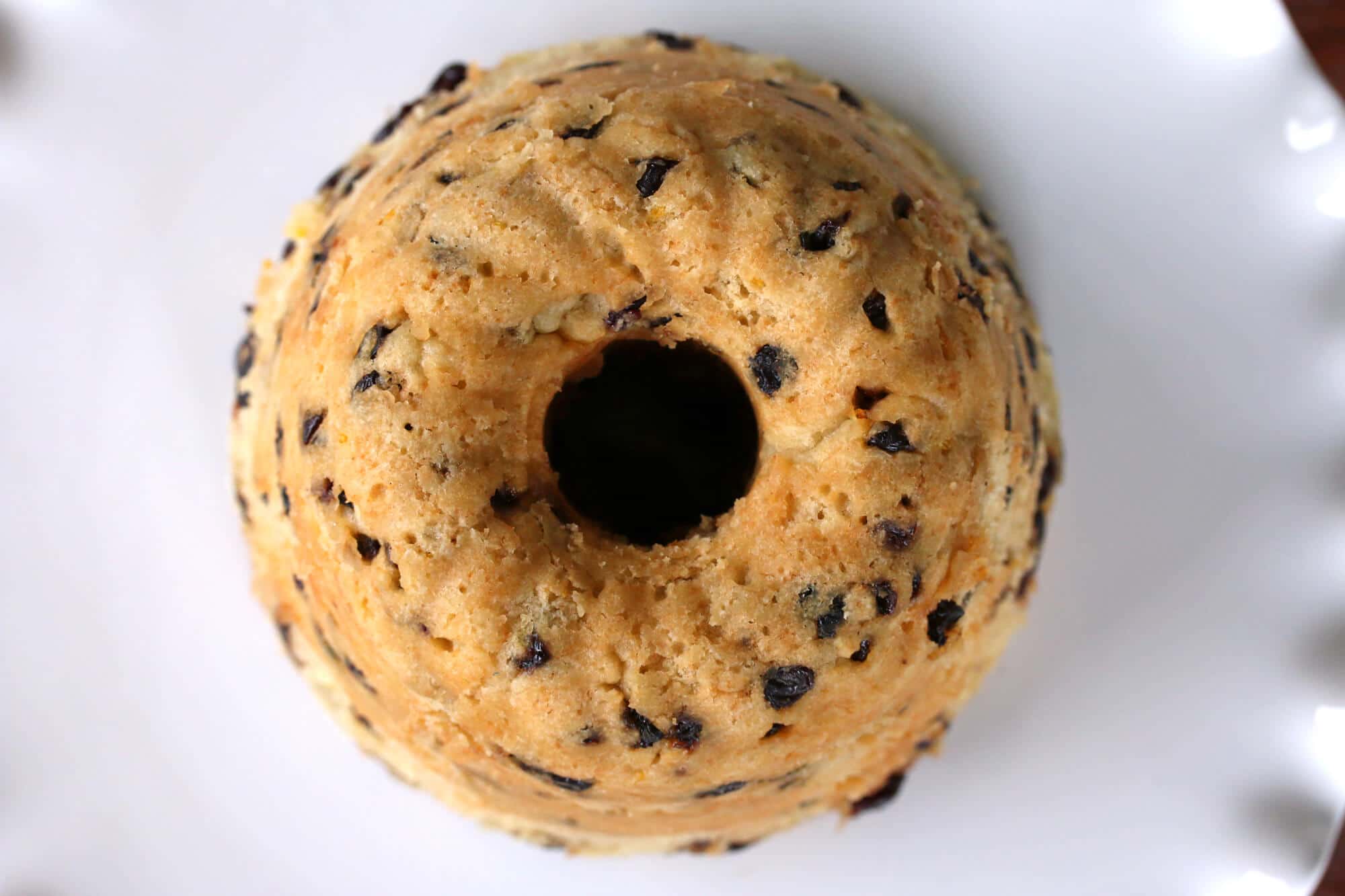
Cut the spotted dick into wedges.
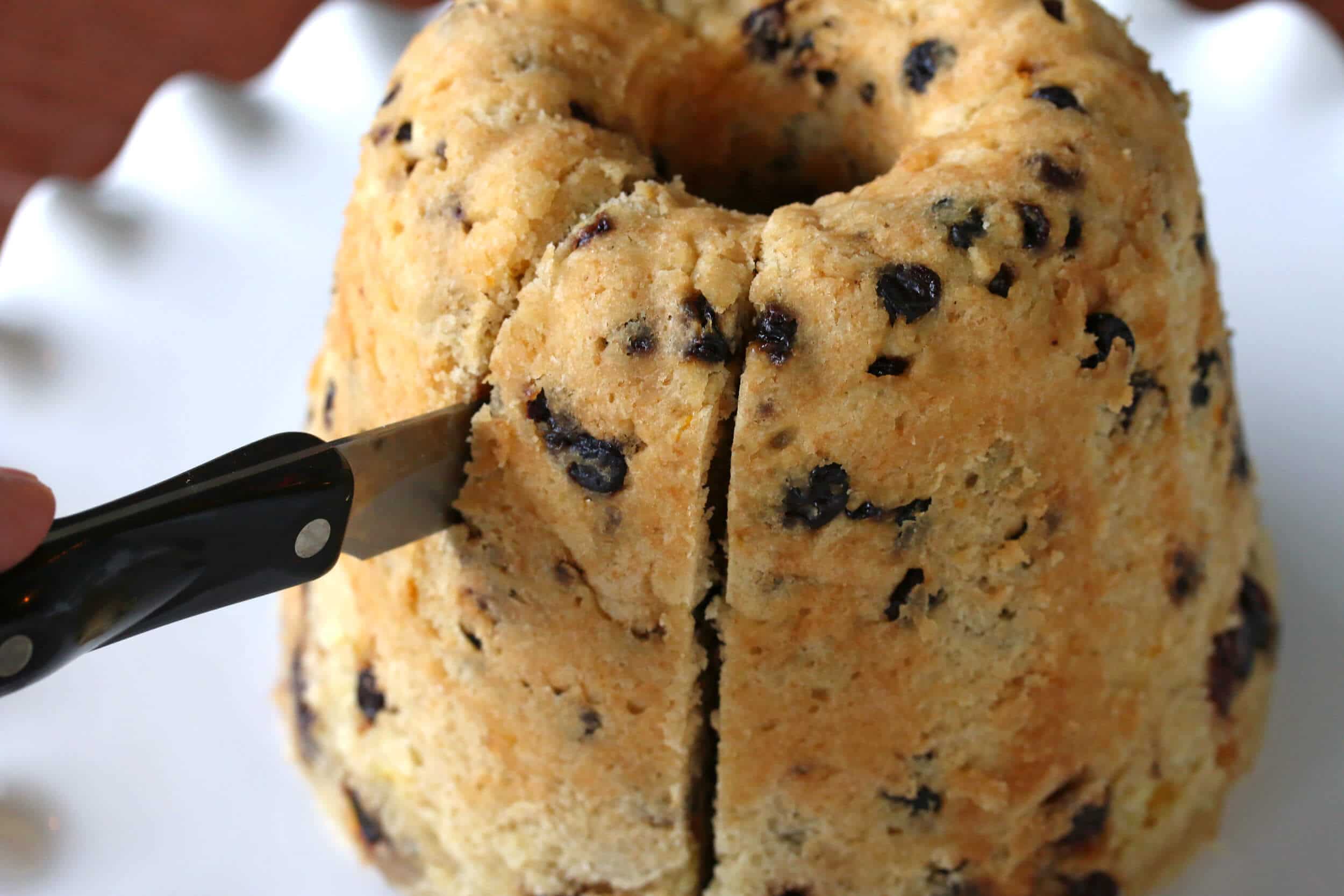
Place a wedge of the pudding on each plate.
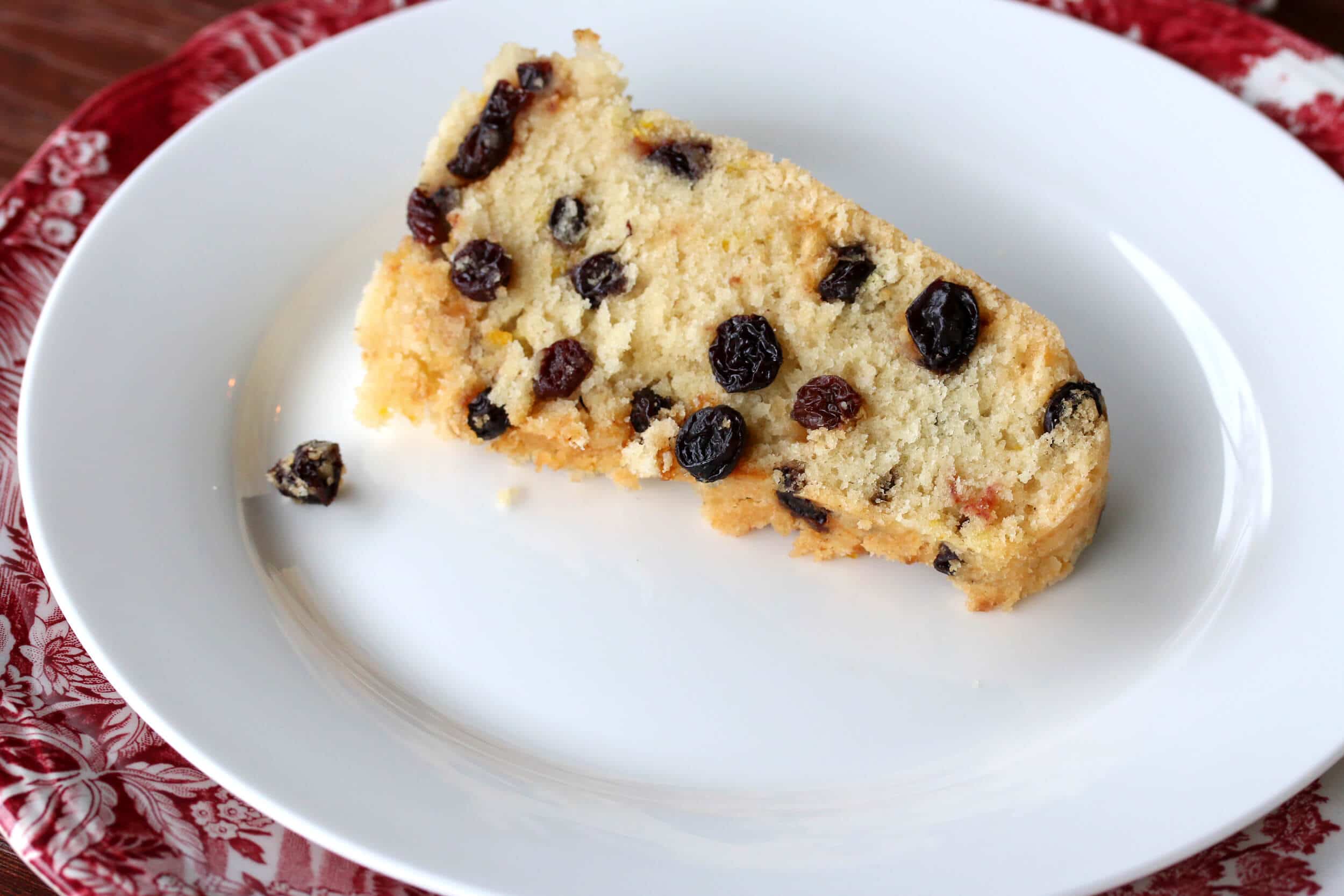
Serve the pudding warm with hot English Vanilla Custard.
Enjoy!
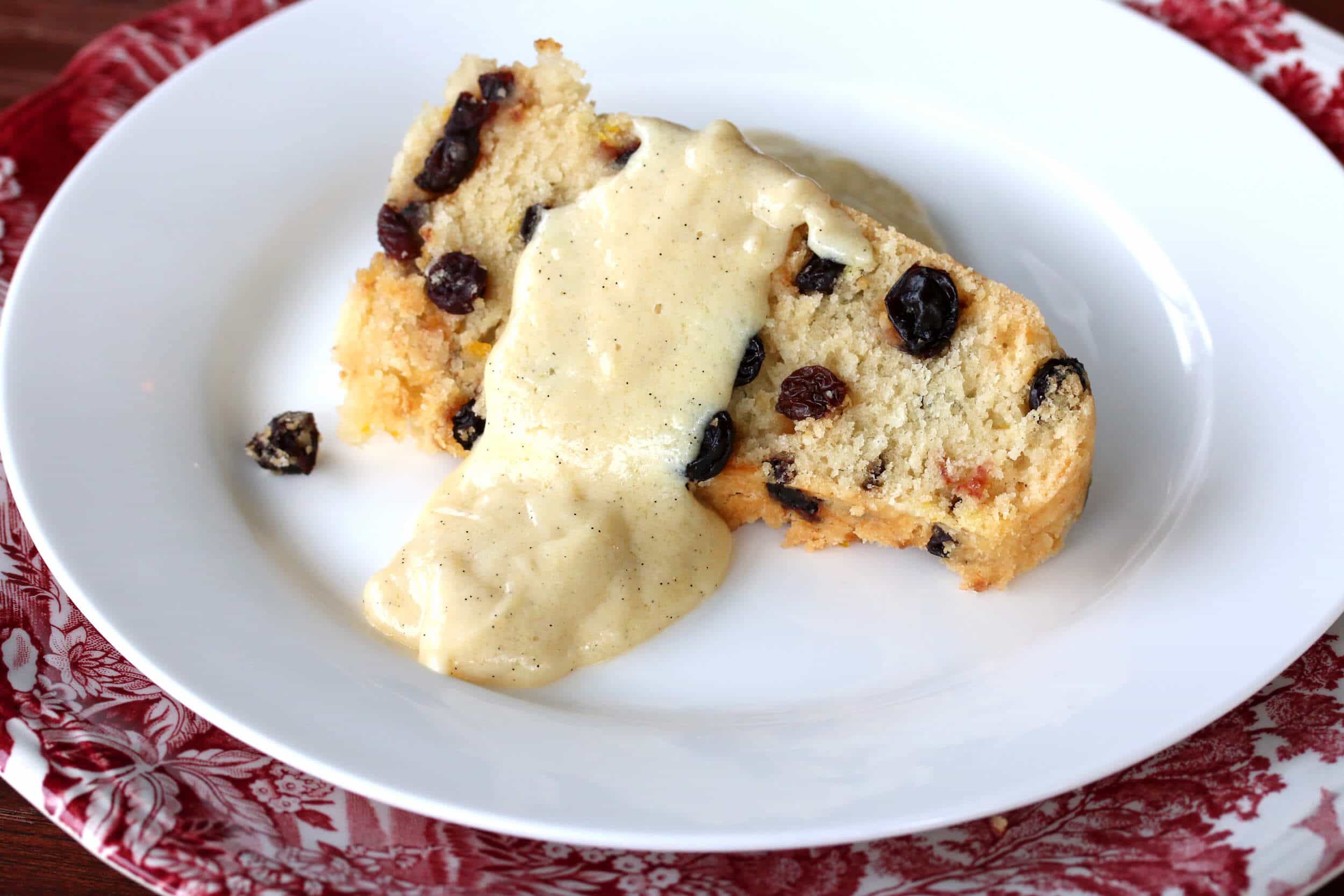
For more traditional British and Irish treats try my:
- Treacle Tart
- Lardy Cake
- Sticky Toffee Pudding
- Figgy Pudding
- Chelsea Buns
- Hot Cross Buns
- Eccles Cakes
- Welsh Cakes
- Scottish Shortbread
- Parkin
- Bara Brith
- Barmbrack
- Mincemeat
- Mince Pie
- Millionaire’s Shortbread
- Victoria Sponge Cake
Save This Recipe
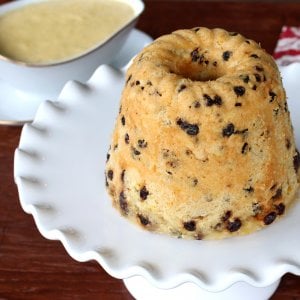
Traditional Spotted Dick
Equipment
Ingredients
- 2 cups all-purpose flour
- 2 teaspoons baking powder
- 1/4 teaspoon salt
- 5 ounces shredded beef suet (highly recommended for best results, but can substitute 10 tablespoons chilled butter, diced)
- 2/3 cup caster sugar or regular granulated sugar , see NOTE
- 1 cup dried currants
- 3/4 cup milk
- 2 teaspoons quality vanilla extract
- Zest of one large lemon
- English Custard Sauce for serving (click link for recipe)
Instructions
- Place metal cookie cutters, a folded towel, or crumpled tin foil in the bottom of a large stock pot to prevent the pudding mold from touching the bottom of the pot. Add water and bring to a boil. Generously grease a 1.6 liter pudding mold..
- Place the flour, sugar, baking powder, salt and suet (or butter) in a food processor and pulse until the mixture resembles coarse sand. Transfer the mixture to a large mixing bowl.
- Add the milk, lemon zest, vanilla extract and currants and stir until combined. Scoop the batter into the prepared pudding mold and secure it tightly with the lid.
- Lower the pudding mold into the boiling water so that the water comes up to the halfway point of the pudding mold. Reduce the heat to a simmer and simmer undisturbed for 3-4 hours if using suet (it has a very high melting point and needs that amount of time to melt and create the "pockets" throughout the pudding that yields the characteristic light/spongy texture associated with suet-based puddings) or about 90 minutes if using butter. You'll likely need to weight the pudding mold down with something heavy to keep it from bobbing up and down in the water. I use a plate and then put something heavy on top of it, like another bowl. Check the water level periodically and add more water as needed to keep it at the halfway point of the pudding tin.
- Remove the pudding mold from the water and let it sit for 15 minutes. Invert the pudding onto a plate. Slice into wedges and serve warm with Vanilla Custard. See NOTE about reheating.
Notes
Nutrition
Originally published on The Daring Gourmet December 17, 2016



















I’m surprised no-one has recommended Bird’s Custard Powder as an easy, quick alternative to making your own vanilla sauce. If you have a Wegman’s grocery store near you, go to the European/International food aisle and track it down. It keeps for ever, and making the custard is a cinch. Mix a teeny bit of sugar with some of the powder (recipe is on the box/tin), add milk to make a runny-ish roux, then bring milk to a boil, add the goop and bring back to a low boil to thicken, and it’s done! So much easier (and very tasty) than starting from scratch. Thanks for the tips about suet. Infuriating you can’t get it here. We used to get chunks of it free from our butchers in England and Scotland. For texture and lightness it’s unbeatable.
YES Bird’s Custard is the best
Hi I have tried the recipe, I made an error with the milk quantity as I converted to ml !! anyway, as I was in the second stage of stiring, I quickly said to myself, this is wrong! So, I had to double the flour, had run out of suet, so used butter instead and lemon zest up plus currants did not have any extra. I used sultanas.
I found a container from a shop that is used for camping and its perfect. Because I had a lot of spotted dick, I had to divide into two. My hubby is English and I am Maltese. We live in Malta and I had heard of it and hubby wanted to have it as his granny from Cambridge used to do it frequently. I did the custard too. So I have two puddings but have not tasted as yet. Happy I can freeze it and it might not look perfect, but as the English say, the proof is in the pudding.
Hi Isabelle, I’m glad you were able to “save” it – happy eating! :)
Thank you will let you know :) I should call it Maltese Spotted Dick lol
Lol, exactly! :)
My Father was British so I spent most of my summers there as a child. Like you I love British food and make quite a bit of it. But I love reading the stories you put in about places and things. I make Caster Sugar in my Blender or food processor and keep a 5lb container of it on hand. I just put in a pound at a time in the blender or 2 pounds at a time of granulated sugar blitz it 5 or 6 times for 30 seconds then pour it into a air tight container. I have to send to England to get Suet but NOTHING we have here can compare to the way it works in dough!! I am dead awful at Pie Dough yet I can make croissants but with suet my crusts are perfection! And no matter what anyone says Vegetable Suet is NOT a good alternative. And NO it doesn’t flavor your dough
Funny timing, Sandra, I’m making spotted dick for Sunday dinner today! :) I agree 100%, you just cannot beat real suet. And yes, that’s exactly how I make my caster sugar as well – it’s super easy and much cheaper than buying it here. Have a great rest of your day! Best, Kimberly
I can’t get the lid from the steaming mold to come off. There is a spot on the lid that says open but it does not line up with anything. I feel like I would
have to damage the mold to remove the lid.???
Hi Shirlee, I haven’t experienced that but it’s probably just the suction caused by internal pressure. Good luck and I hope you’re successful in removing it!
Oh my, this looks so delicious! I have wanted to make spotted dick for quite some time, even though I have never tasted it before. The texture looks so wonderful, and I just love custard sauce (there is no chance whatsoever that I would leave off making the custard sauce!)
I love simple, traditional and homey looking recipes such as this one. The moist look, and the texture of the crumb of your recipe looks very tempting indeed!
I am going to make this as soon as I receive the pudding mold! Thank you so much for the recipe and all the information you provided with it.
I am thoroughly enjoying your wonderful recipe site!
Thanks so much for your complimentary note, Annette, and I hope you enjoy this pudding and sauce!
Love, love this recipe!.My grandmother was famous for her chocolate steamed pudding with foamy lemon sauce. It was delicious and if I remember right she also used suet, as most steamed puddings did because of the lovely moist texture it created.And I made a maine blueberry steamed pudding with a lemon sauce…it had a bit of mace in it. It was just scrumptious
Thank you, Laura, and the chocolate and blueberry puddings sound scrumptious indeed!
Can I mix the dough in the morning and steam later in the evening? Or does it have to go into the steam right after mixing?
That’s a great question, Maria, and one I can’t answer based on personal experience as I’ve always steamed it directly after mixing the batter. My instinct tells me that it would be okay because it’s the suet that creates air pockets as the pudding is steaming and is what makes the pudding light. I don’t think making the batter in advance would pose a problem because the suet will not melt in the batter. Perhaps one of our readers has tried making the batter in advance and can speak to that. In any case, if you make the batter in advance, let us know how it turns out!
This was OUTSTANDING!! I only ever had the canned stuff in England and homemade is a total showstopper. Will be making this again for sure, DELICIOUS!
I’m so glad to hear it, Candace, thank you!